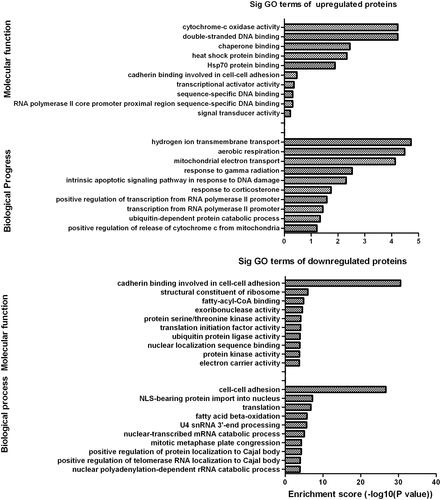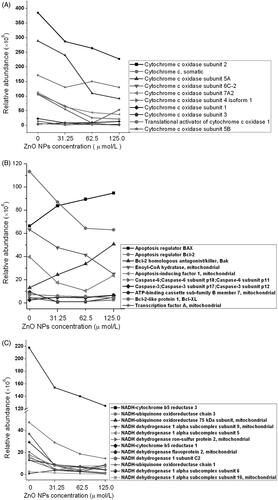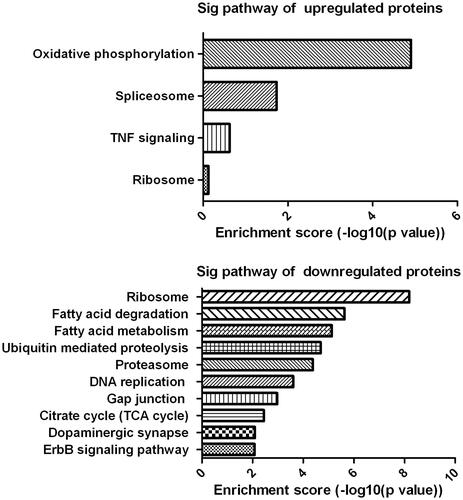Figures & data
Figure 1. Characterizations of ZnO nanoparticles. (A) Morphology of ZnO nanoparticles; (B) Size distribution and (C) zeta potential of ZnO nanoparticles dissolved in DMEM.
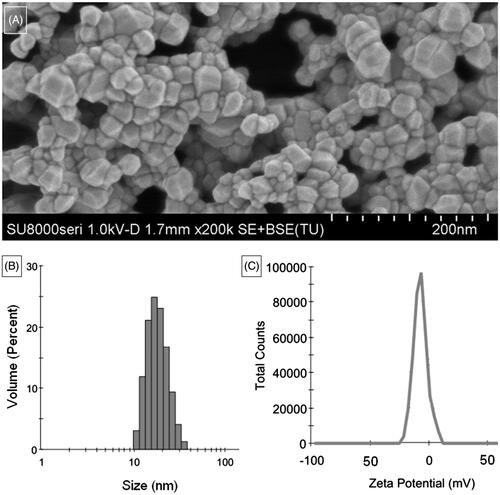
Figure 2. Changes of cell morphology after exposure to different concentrations of ZnO nanoparticles for 6 h. (A) Control cells; (B) cells treated with 31.25; (C) 62.5 and (D) 125.0 μmol/l ZnO nanoparticles, respectively. Bar =20 μm.
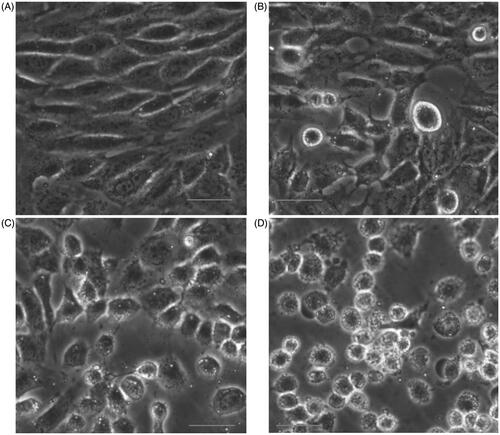
Figure 3. Effects of different concentrations of ZnO nanoparticles on 661 W cells for 6 h. (A) Alterations of cytochrome c levels in cell culture supernatants; (B) Cellular ATP content; (C) Collapse of mitochondrial membrane potential; (D) Analysis of intracellular ROS levels; (E) Alterations of intracellular total antioxidant enzyme activities and (F) Apoptosis/necrosis analysis. Results are shown as mean ± SD of three independent experiments. *p < .05 and **p < .01 versus relevant control.
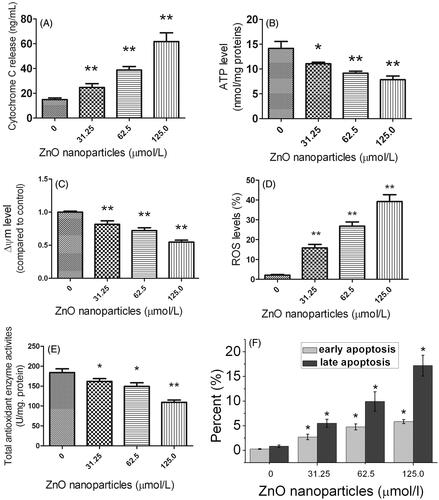
Table 1. Summary of label-free quantitative proteomic profiling results.
Figure 5. Determinations of Bax, Bcl-2 and Caspase 3 expressions at mRNA and protein levels after exposure to different concentrations of ZnO nanoparticles for 6 h. (A), (B) and (C) were determined using quantitative PCR, (D), (E) and (F) were determined by ELISA. *p < .05 and **p < .01 versus relevant controls.
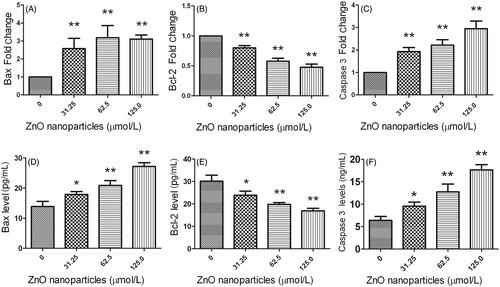
Figure 6. Gene ontology (GO) analysis of differentially expressed proteins. Categorization of differentially expressed proteins was analyzed according to molecular function and biological progress.
